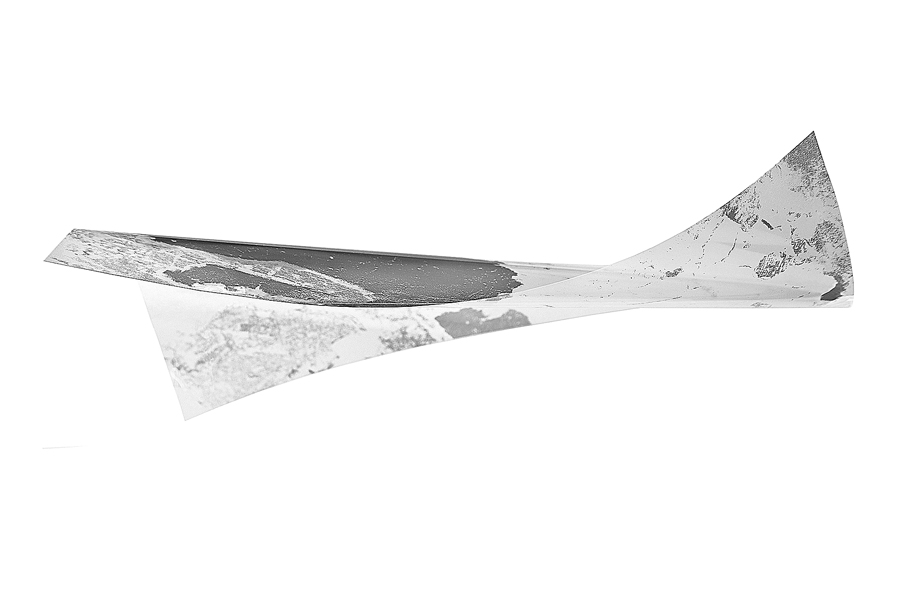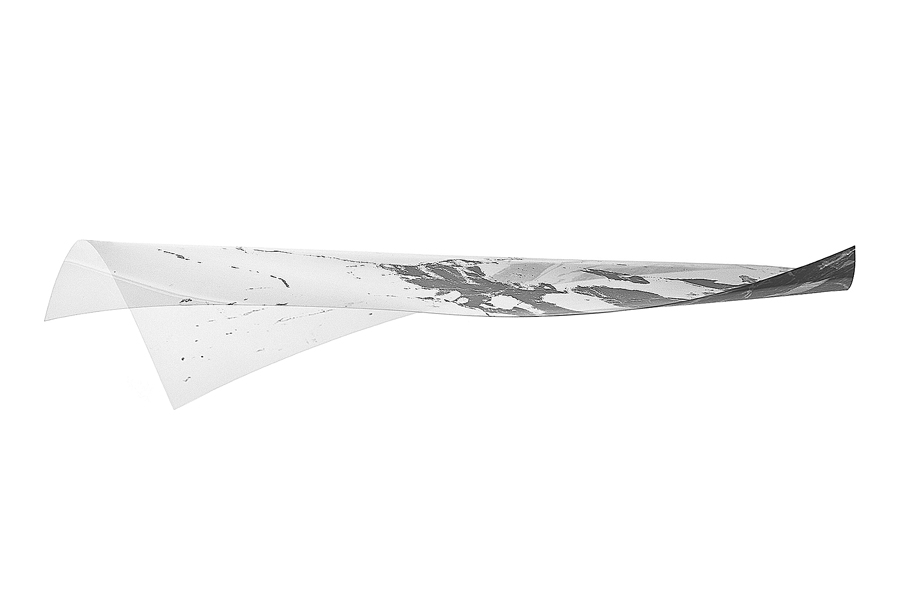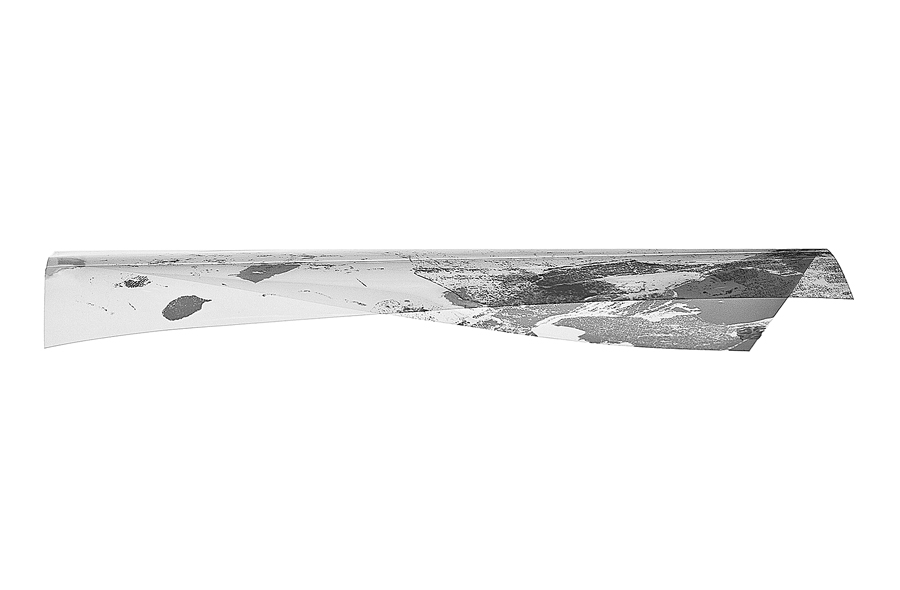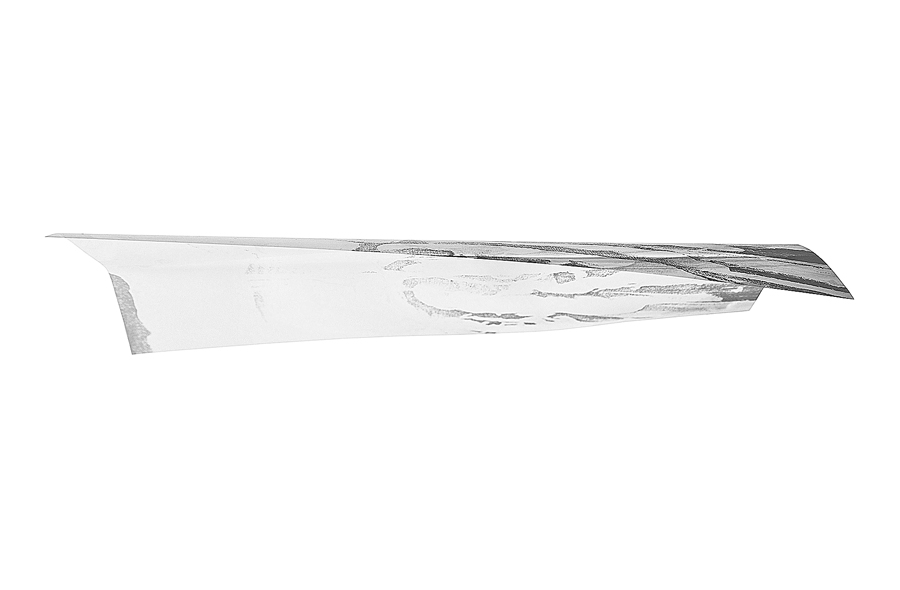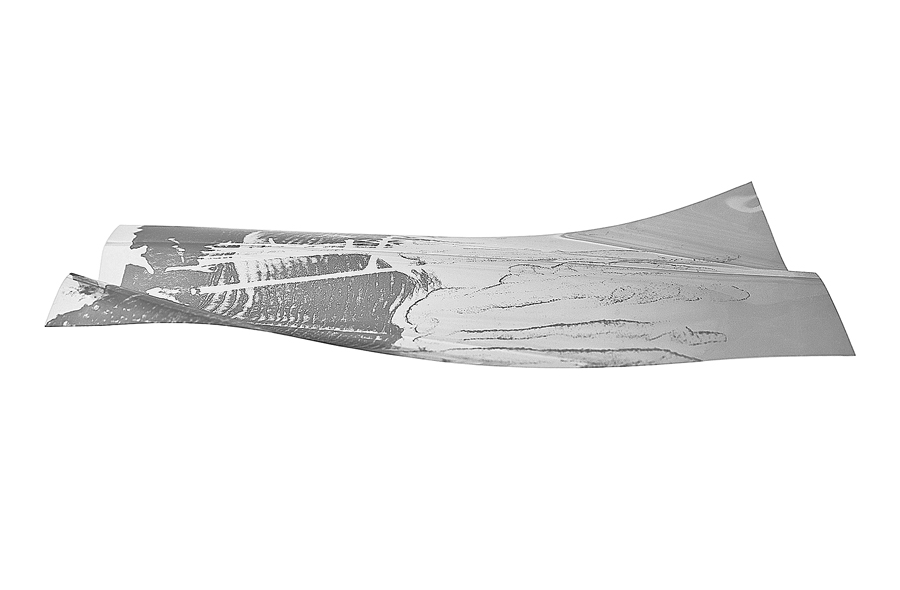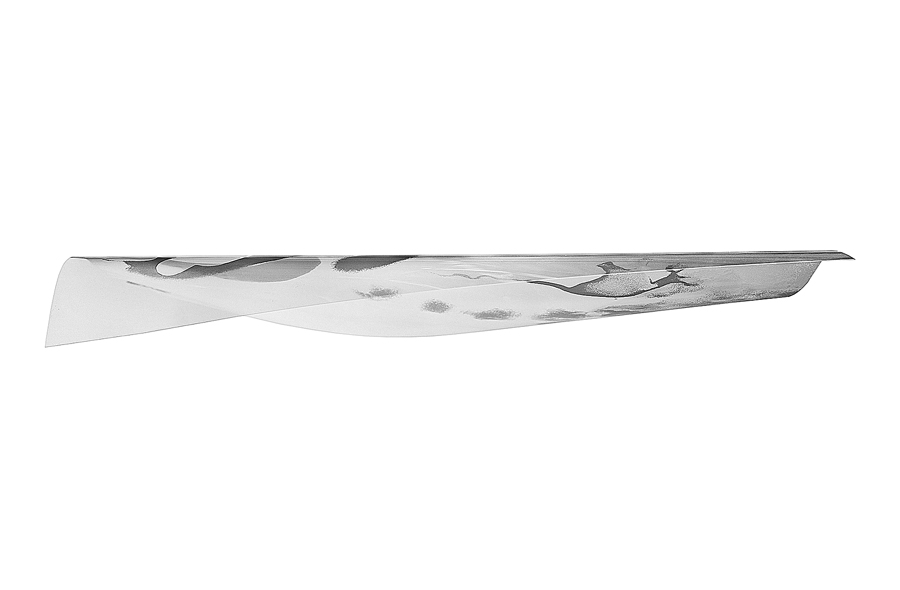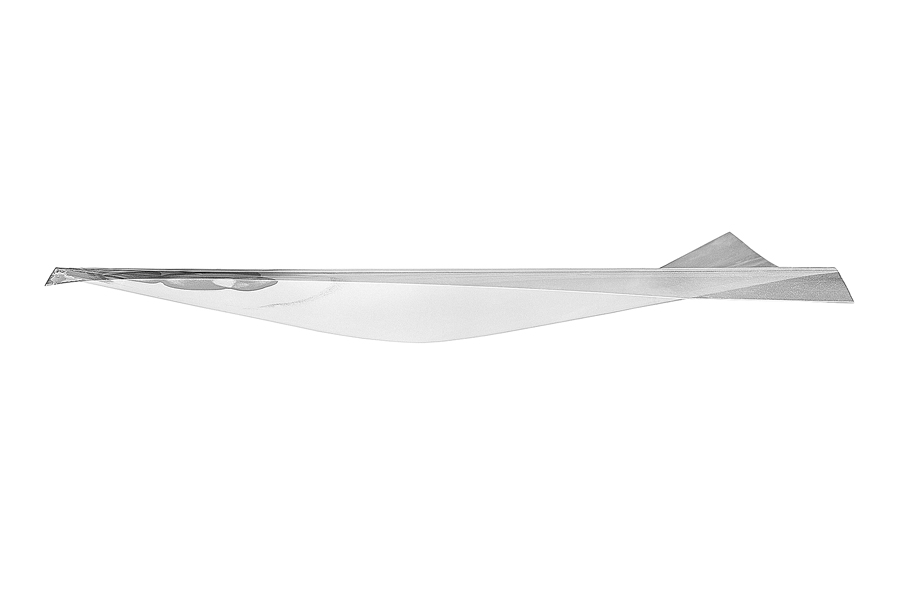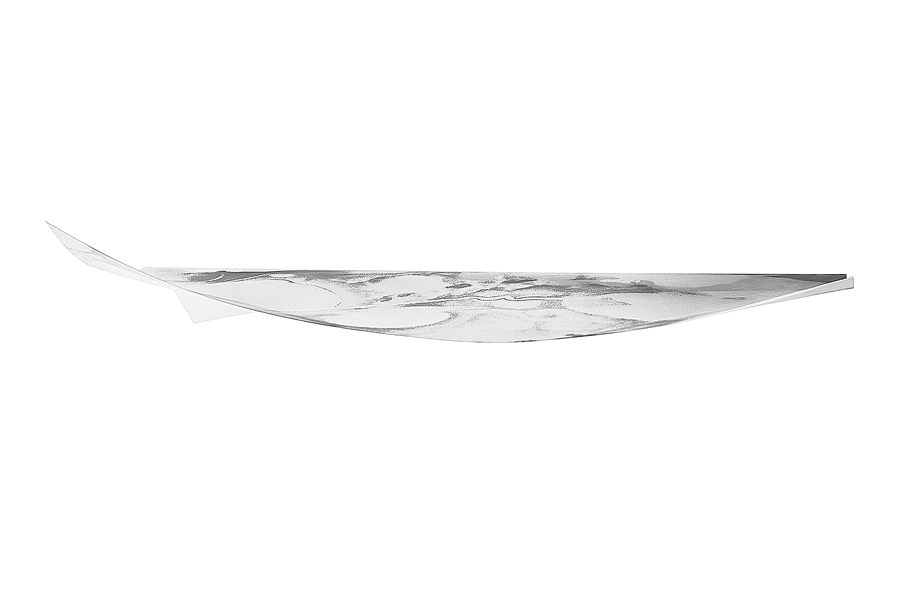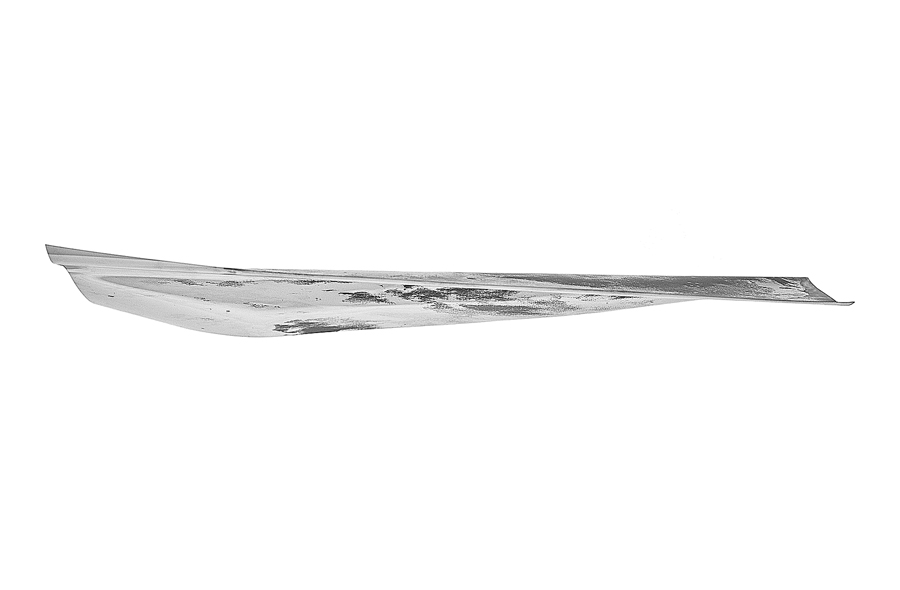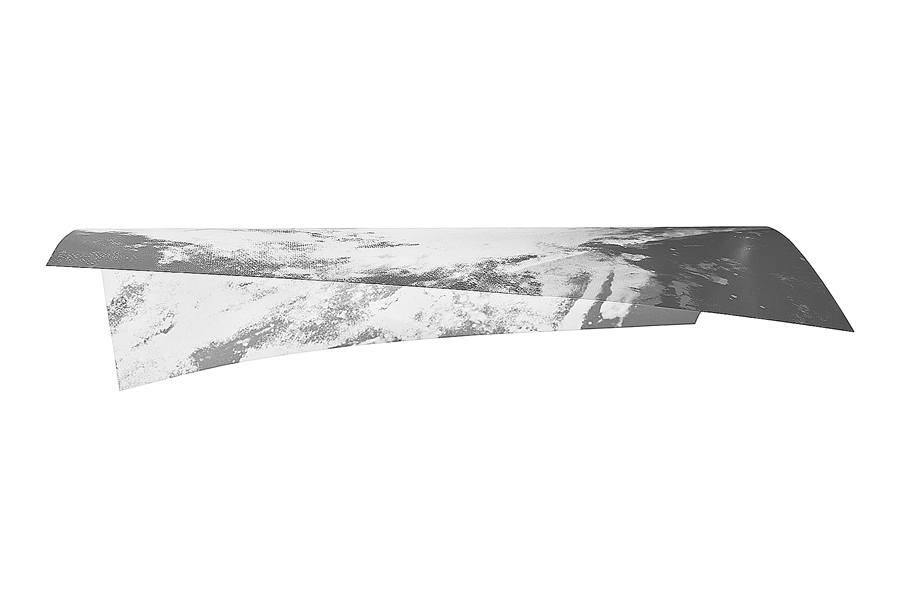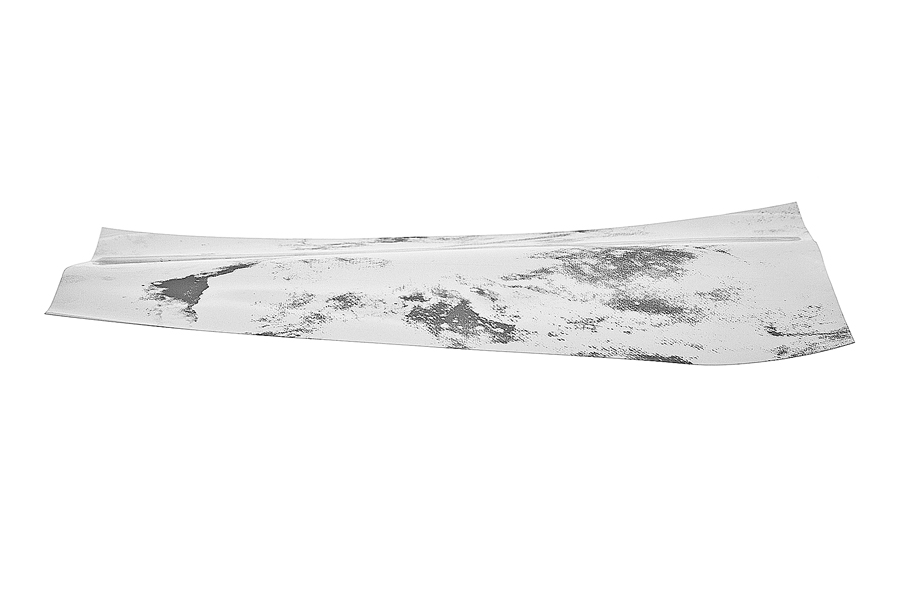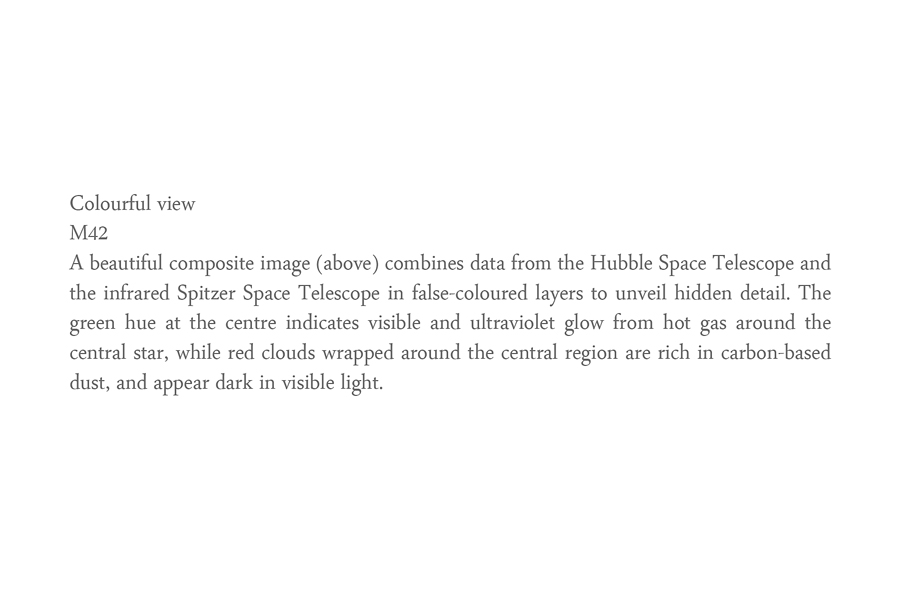.
In ‘the grey indicates the presence’, scientific images, appropriated mainly from publications popularising science with spectacular imagery, are treated and displayed as samples. Through following a process devised to parallel the mentality of systematic scientific study methods, the work not only critically examines, unmasks, and deconstructs some of the structures and visual conventions of scientific imaging practices, but simultaneously questions the scientific typological approach to structuring reality, premised as it is on assumptions of an underlying structure organising the world.
.
Reversing the common production process of artificially combining multiple disparate sets of measurement data in a single frame by encoding the information with randomly assigned, case-specific, bright colour ranges – to generate visually captivating, colourful imagery – the work investigates the actual information in scientific images and challenges the traditional conventions of representation. The information coded by each colour range in the source material has here been separated into individual layers free of the added artificial colour, thereby exploring communicating the notion of scientific images as visualised data rather than as depictions of real visual experiences.
.
Dismantling the distinct visual language we are accustomed to associating with scientific imagery by erasing the often arbitrary, artificially assigned visual coding renders these layers of signifiers ambiguous, even incomprehensible, thus revealing our limited ability to interpret accurately the purported information scientific imagery is ostensibly supposed to convey. Rather than questioning the professional, expert uses of scientific imagery, the work thereby critically examines the validity of the authoritative, purportedly informative socio-cultural role of informational images as supposedly truthful evidence in allegedly communicating scientific information in a more comprehensible form to wider audiences.
.
The inevitable degradation, loss and warping of information in the process of representation, visually manifest in the images, addresses the inherent limitations, shortcomings and technical inadequacies of mediated two-dimensional still images, spatially and temporally fixed to a singular viewpoint, as adequate, accurate representations of complex, multidimensional, multilayered reality.
.
Rather than asserting to illustrate a better way of depicting scientific entities, these measuredly bland, pale, and neutral monochromatic layers question the habitual, monotonous construction of extensively spectacular, lurid scientific illustrations, proposing that we should understand utilitarian scientific images as artificially generated artifacts. ‘the grey indicates the presence’ thereby offers conceptual parallels to be drawn back to our reactions to and interactions with actual scientific imagery.
.
details from the work:


